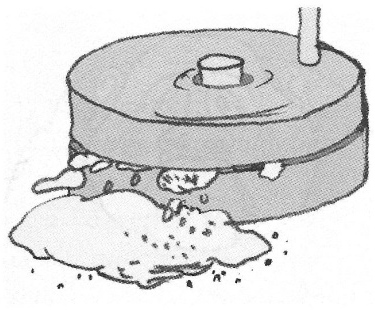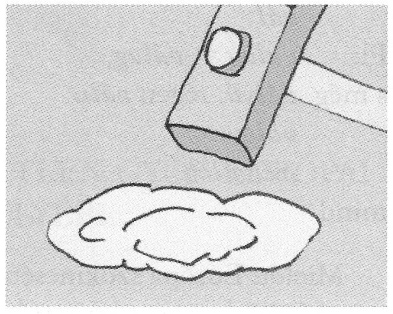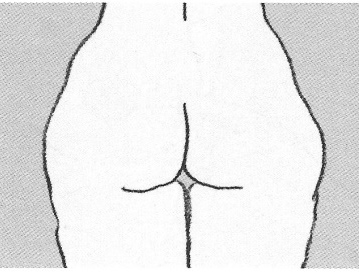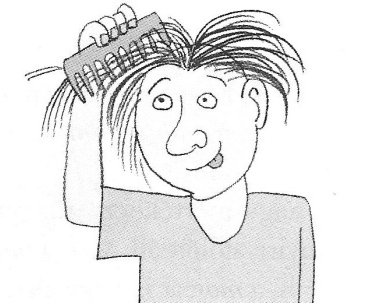Looking into the European spreading of one root of the ‘proto-nostratic’ language
We could previously recognize that there must be very deep connection between Europe’s languages and Hungarian. (This can be seen in many other languages, but we deal in this book mainly with European languages.)
I am going to present the MAL root’s European life to demonstrate, more than before, the primary role of the archaic ‘proto-nostratic’-Hungarian language. (See also in Book HAR on pages 177-192.)
Variants with every vocal may be used:
MÁL = mal = mol = mul = mül = mil = mél = moul = moly …
The articulation does not distort the picture hidden in them. The picture hidden in the MAL root: szétmenő, részeire hull, lágy like málló, málladozó (come asunder, falling into parts, soft, crumbling, friable).
The MÁL
l>r variant:
mar, mor
for inst.: málladék = morzsalék, martalék. (detridus=crumbs, booty) for: l>z>sz méz, máz, mosz(at) (honey, glaze, alga).
One of its close variants:
vál > valag = válag (shoulder, arse)
vályú, earlier válú (feeding trough)
völgy (valley)
Szétválók (szepataring all).
Lets see the ‘hidden’ picture before we look around in Europe’s vocabularies:
First MÁL and then its most frequent articulation-variant: VÁL.
The root represents the most important attribute of the word. This way, we can name quite different phenomenon can be named by the same root. For example:
malom (mil)
málna (rassberry)
moly (moth)
After these see some word-interpreting pictures:

(malé, l>r : morzsa (mil)
(dull, corn-mush, crumb)

(mil) (French: ‘moulin’)

(“málság” = válság = (crisis)

(malaszt: (divine grace) ‘lágyító’)

(Germ: Motte)

moh m>b boh>pih>pihe (flock,
floss)
moha (moss), b>p: poh, puha (soft)
mohar, puhít = páhol (soften, beat up)

(lumpish, dreamy, simple)

(paint, smear)

(Breast, soft)

(rest, prey)

(honey, gloss, guise, lime)

(alga, smear, mass, must)
We see, the meaning of this archaic picture: something moulders, falling apart, dissects, asunder, being friable … and it is largely independent, standing above the direct objectivity: MÁL = málna, molett, méz, moszat, or even mószerol, maszatol (raspberry, plump, honey, alga, nose, smudge) Because, by naming we look for the adequate spectacle the matching archaic picture and root and on this root we build up our word and not on any other root.


(it sense = meaning)

‘váló’ (divorsing’)


(choice, make a selection, choosen)

(parting, choose, change, alter)


vállal (to shoulder responsibility)
vállalat (company, firm)
Would I sketch all the figures outlining the pictures to explain the meanings of all words starting with this root, an imposing picture book would be created. To present just the meaning of this root, only one picture (image) would be needed.
We see after these few picture-examples how definite and exclusive is this system, the exclusively word-building based on roots, on archaic pictures in our vocabulary. Something soothing, softening that is MÁL as well: mállaszt, malaszt, meleg. (cause to crumble, divine grace, warm)
The words “mállasztó meleg” (crumbling warm) is the root MAL twice used with different articulations. But the word MOLett is soft also, even if we think, it is a foreign word. (It is one of our words ‘seen by birds’). All the words, built on one root, lighten up all the others, even then if their meaning is totally different. For example, we have seen the ragged ankle sock with its tattered heel. It’s málladozik (crumbling), its condition is mállságos, but MÁL = VÁL therefore, we also say, the condition of the sock is válságos (critical) because válik szét (apart). We understand this way the conception of a political válság <válshág> (crisis) better. We often say, further that “majd elválik az igaz” (“time will tell what’s the truth”)
We can recognize that in the words below
vél (consider),
vall (confess, declare),
való (true),
valóság (fact, reality)
volt (was, former) is hidden again the root VÁL = MÁL and we met again philosophical thoughts. And think further:
what is múlt, (was)
that is mált (after m>v change):
volt (has been)
levált (came off)
vála = vala (gone)
válóság = valóság (reality)
We introduced many pictures word’s explanations in the book HAR. See some of them in the following (without pictures):
MAL l>r: mor,
morzsa (crumb)
martalék (booty), thus, we understand the expression:
the “halál martaléka” (the booty of death). The death
szétmállaszt (crumbles and separates)
szétmar (fret)
szétmorzsál (crumbles)
martalékává válunk (we become its booty), and from this came the mordeo in
Latin
and morbid = maró = (mordand), but also the Hung. word’s
meaning morc (grumpy, morose)
maródi (sick, disabled)
maradék (rest, remainder)
marad (remains)
maradi (hidebound, old fashioned)
r>l: múlt (past)
Lets see after these in some greater detail, how much the root MAL having been absorbed into the vocabularies of Europe’s languages. (This presentation is not complete – it would need a whole book for that – but it will be enough to present it and receive an acceptance of its essence. Further, I won’t analyse, from where this or another word into came the German, English or Latin vocabularies, because the simple overview would be lost.):
Hungarian (only the pronunciation variants of M . L):
málik (disintegrates)
málaszt (to cause disintegration)
maláta (malt)
malom (mill)
molnár (miller)
moly (moth)
málna (raspberry)
málló (friable)
málé (clumsy)
méla, méláz (dreamy, indulge in daydreaming)
méz (honey)
mézga (resin, gum)
máz (glaze)
mez (garb, shirt)
mosz (moszat, maszat, mész) (alga, smear, lime)
moh, moha (moss)
and then more:
meleg (warm; with back vowel málag)
malaszt (divine grace, is mállasztó as well)
mellék, málladék (accessory, secondary, crumbled remnants)
mellől, mellé (next to, from beside)
mell (breast)
mély (deep as válló: separating)
mely (which separating)
melyik (being chosen)
milyen
méltat (= “váltat”, and vall: confess, decide)
méltó (worthy)
muja (mula), (doltish)
molyh> bolyh, pelyh-es, after metathesis: pehely, pihe, puha,
poh, páholy … (see earlier content)
múl, múlt, which already elmált, lemorzsolódott, levált (past away, crumbled, became detached)
As we see, man can’t come free from this root, how many “synonyms” stand in the row. There is nothing to replace the basic root-image-picture and this is the essence of the root system.
See MAL in well known foreign words:
melanzs
melankólia
melodrama (all of them – soft, friable)
molett: mállot (friable)
molesztál (molest)
molekula (molecule) málladék, morzsa (crumb)
moll (as a musical scale: softens, málló)
melódia
Remember in ‘melodia’ is the word ‘-di, -dia’: d>t>cs: csia, cseál: csinál, tesz = does. Csizma-dia = csizma-csináló is built the same way as ‘melo-dia’. Melodia therefore = (it sounds clumsy) is melo-csináló = melo-doing, mállasztó (softening), mézes-édes (honey-sweet) atmosphere-creating music.
English:
mal (sickness) (málladozás)
malleable,
mellowing, (mállaszt)
mellow (málló)
melange
melt (mállast)
mild (malt)
mill (malom)
molar (mállasztó, örlő fog)
mollify (mállaszt)
mollusc (puhány, mált)
mouldy (málló)
moult (vedlik, levet ) mállik, válik, váladék.
German:
Malter, (mész)
malmen (mállasztani)
Melankolia (mélabú, elmálás)
Melasse (sweet, méz, )
meliert (vegyített)
melken (fejés), leválaszt
Meltau (listharmat), málladék
Milbe (mite)
mild (lágy, mált)
mildtätig (soft-hearted)
Molasse (málladék)
Molekül (molecule)
Mulde (mál>vál>válu>vályú)
Mull, mulm (málladék, porladék)
Latin:
malagma,
malacus (soft)
malleator (hammerer)
mallo (hämmern
malleus, (hammer)
malum, (bad, sickness)
malacticus,
mel (=méz) (honey)
melancholia (melancholy)
melicratum
mellitus (mállasztó=beautiful)
melodia (melody)
mola (mill stone)
molator (miller)
molinarius (molinár, originally molonár. After m>n
molin change: malom ,málom > molon,.
The –ár /like kolompár, futár, therefore the molinar seems to be a Hung. built word.
molitio (őrlés, mállasztás)
molleo (málló, puha lágy, soft)
mollio (mállóvá, it makes friable)
müliao (gritting one’s tooth)
molitio (mállóság)
molo (mállaszt, mills)
mulceo (mállaszt, enraptures)
mulco (lágy, soft)
Old-Greek:
méldo (puhít, mállaszt)
méli (málladék, mézga: váladék from the trees, this time, meaning of, mál, vál and méz after l>z change + -ga = méz-ga is certainly a Hung. built word.
meliédész (= mézédes) honey-sweet. Please try, after l>z change, to articulate until you receive ‘méz-édes’ and after many changes in alphabet and articulation during the over 2.000 years, you could speak to your ancestor. You don’t wonder hawing red the comparing of the Hungarian –
OldGreek at the end of chapter 17. Big part of the other words sounds similarly in our ears and why mezi > méz the meli today, further why was our moly <moy> 150 years ago moli? You see MAL and Mol is the same word with different articulation.
Melizo means szét mállaszt – szétválaszt (separates and to sing)
müladz (mill stone)
Mülodros (molnár)
Mülos (malom)
We see, the meaning of every word is based on the root, pronounced today mostly as MAL: falls apart, disintegrates, soft, pliable. This archaic meaning is stable. Not any change of the vocals or even the consonants changed the sense of it.
Even not, if the ‘l’ changed to ‘z’:
mez, máz, méz, but it didn’t change in Latin:
‘mel’ = méz
maltha = máz (gloss)
And not after ‘z>sz’ change: mész, meszel, maszat, moszat
(lime, lime-wash, stain, alge)
English ‘mush’
No change after
‘m > b or v change:
bolyh (fluff),
bolygat (disturbs)
vál, vált,
váló
váló = völgy, valis, vadi, váladék, valag,
vél, vall, vill, választ.
And not after
‘l’> ‘j’ change:
váj, and not after
‘l> z >sz’ change:
vés, vás, and losing ‘v’: ás (dig). Everything going asunder, divide … and also the words volt = múlt (was = past).
Not even then, if ‘l > r’:
morzsa, morzsol and with metathesis : mozsár (mortar)
márvány (marmor)
mar (bite, corrode)
méreg (poison)
marad (it remains = parting, dividing).
mor < múl < elmúlás ,<ɛlmuulaash> passing, mortality
even in
Latin
morior, (deceasing > lemorzsolodik (dropping out of…)
mordeo, (mar, harap = bites)
mortualia (transitoriness, )
mors (death)
morsa (morzsa = morsel=crumb)
morsus (bite)
mortifer(us) (deadly)
mortarium (mozsár = mortar)
OldGreek
merizo (divide, measure out). The Hung. mérleg>mérlegel (to weigh), r>z change: mérel >merez> merizo.
merisz (part): ≈ méret, mérték (scale), mérés (to measure). I guess, the word ‘meter’ did come from méret > meter by metathesis.
merismos (kimérés = measuring)
meros (allotment, quota)
merops (halandó = morzsolódó = crumbling = mortal)
mermeridzo (mereng = to muse)
moira (part)
morioé (mérték, part)
morosz (doom)
morpseos (raptorial)
We don’t continue, because I think that merely reading this many words could be tedious. (We could collect a material for a small dictionary just from the variants of the root MAL in Europe’s ancient and new languages by continuing a deep serious etymological search.)
I am asking the readers not just reading the presented words one by one, but to inspect the whole like being demonstrated in the chapter “The parts an the whole” earlier.
Are we step back however, and look at the whole of the presentation, we are going to see one word in thousand colour, with many-many extensions: that word, which means: disintegration, division into parts, crumbling, dissolution … With this we made one of the archaic roots- pictures visible, understandable; of which most used variants are: MÁL and MOR. We could have seen, had to accept that behind all must stand an archaic common language, may be called “proto-nostratic” language.
This language, having had a large educational effect on all others, is still present, retained its basic structure, most of its ancient vocabulary and being called Hungarian today.
It’s easily conceivable that not English, German or Latin is standing in the background. These are all mixed languages, the OldGreek as well. The Hungarian otherwise, is whole, complete, containing everything, which is only partially in other languages. The layers of MAL or VAL-words are different in different languages, but all present in Hungarian.
It is like, if different peoples speaking different languages move into a territory’s different areas at different times, where a united language exists.
It is acceptable that these people couldn’t discuss and decide about what they will take over from the aborigines, but how different the takeovers of the words was, all these parts were related, were taken from the same system and vocabulary being built by it. The result of these happenings is that the appearance of an “Indo-German language family” is due to the relatively common Hungarian language-layer in the vocabularies of these languages.
Let me tell you an unusual proof of the last statement above by a quotation from the book of Aczél Josef: “Our old-Greek heritage and the Hun-Scythian language” page 175: “The word ‘kinesis’ (the naming of the ‘kinetic energy’ is coming from it) is from our word ‘kéneső’ (mercury, quecksilver). ‘Kinesis’ means: agility, restlessness. Kéneső <kenɛshœ> (mercury) – as we know – will be separated from cinober (cinnabar), called in Greek: ‘kinnabari’ ; and in this means ‘-bari’ (heawy) – because mercury belongs to the heaviest minerals – and together: ‘heavy-kén’. Cinober is a compound of higany (mercury) and (kín) kén (sulphur). The Ancient Scythians let work the ‘kéneső <kenɛshœ> (mercury) mines of Cappadocia and Armenia for yearhundrets. They bequeathed the name kéneső <kenɛshœ> kinesis to us all.”
Now we are going to leave Europe and look for Ancient Egypt before antiquity.
